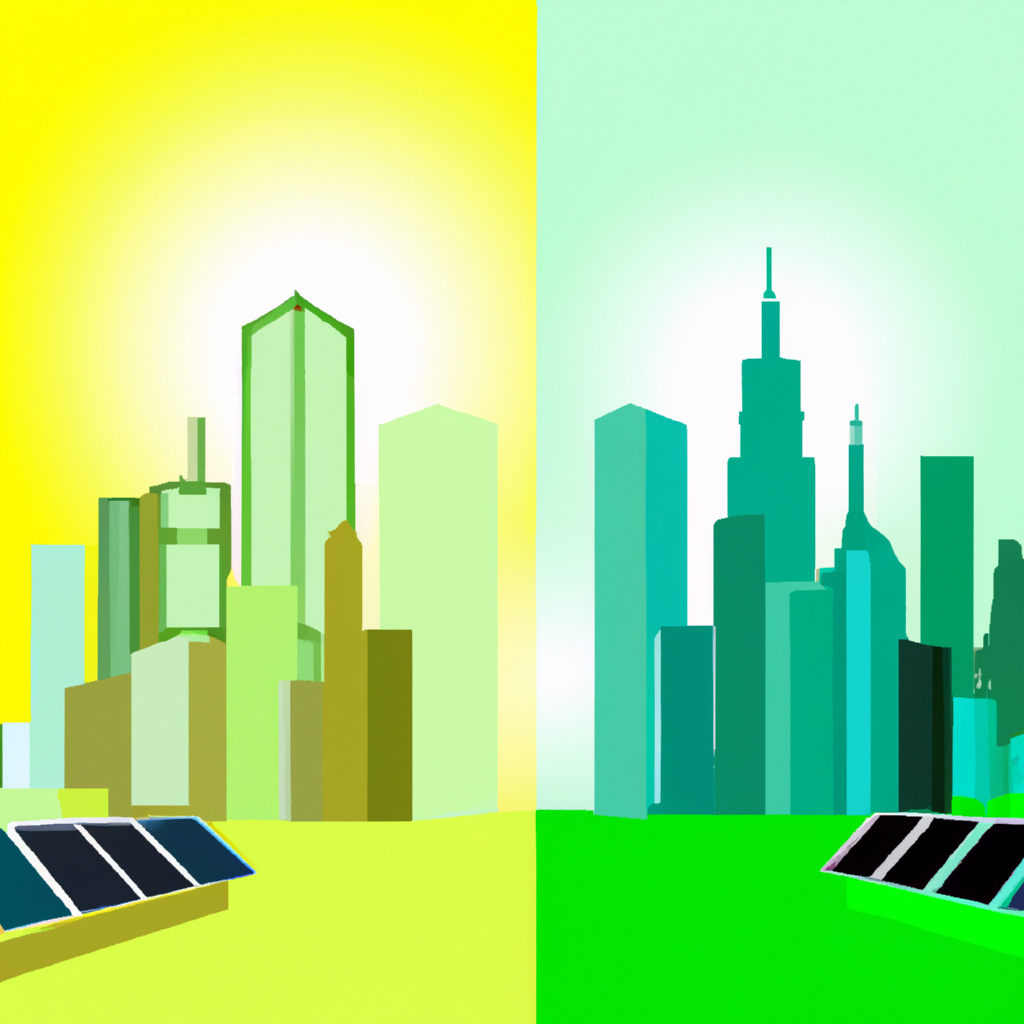Welcome to our comprehensive guide on renewable energy myths and misconceptions. In this article, we will address common misunderstandings and debunk false information surrounding the green energy revolution. As the world increasingly turns to renewable sources to combat climate change and achieve sustainability, it is crucial to separate fact from fiction. Join us as we explore the truth behind these renewable energy myths and empower you with accurate knowledge.

Myth 1: Renewable Energy Is Expensive
One prevalent myth is that renewable energy sources, such as solar and wind power, are prohibitively expensive. While it is true that the initial investment for renewable energy infrastructure can be higher compared to traditional energy sources, the long-term benefits outweigh the costs.
Renewable energy systems have seen significant technological advancements, resulting in decreased manufacturing and installation expenses. Additionally, government incentives and subsidies make renewable energy more affordable for both homeowners and businesses. Over time, the savings on energy bills and the positive environmental impact make renewable energy a cost-effective choice.
Myth 2: Renewable Energy Is Unreliable
Another common misconception is that renewable energy is unreliable and cannot provide a consistent power supply. While it is true that solar and wind power are dependent on weather conditions, advancements in energy storage and grid integration have addressed these concerns.
Battery storage systems enable the storage of excess energy generated during peak production periods, ensuring a continuous power supply even when the sun is not shining or the wind is not blowing. Moreover, smart grid technologies allow for the efficient distribution and management of renewable energy, ensuring a reliable and stable electricity grid.
Myth 3: Renewable Energy Requires Vast Land Areas
Many believe that large-scale renewable energy projects require vast land areas, leading to deforestation and habitat destruction. However, this is a misconception. In reality, renewable energy systems can be integrated into existing infrastructure, minimally impacting land use.
Solar panels can be installed on rooftops, reducing the need for additional land. Wind turbines can be placed in offshore locations or on agricultural land without disrupting farming activities. Moreover, the use of floating solar panels on water bodies presents an innovative solution that maximizes energy generation without occupying land.
Myth 4: Renewable Energy Production Is Inefficient
Some argue that renewable energy sources are inefficient and incapable of meeting the energy demands of a growing population. However, technological advancements have significantly improved the efficiency of renewable energy systems.
Solar panels are now more efficient in converting sunlight into electricity, with higher conversion rates and improved materials. Wind turbines have also become more efficient in capturing wind energy, thanks to aerodynamic designs and optimized blade shapes. These improvements, coupled with the scalability of renewable energy systems, ensure that they can effectively meet the energy needs of both small communities and large cities.
Myth 5: Renewable Energy Is Harmful to Human Health
There is a misconception that renewable energy sources, particularly wind turbines, pose health risks to humans. This myth often stems from concerns about noise pollution and the alleged “wind turbine syndrome.” However, numerous scientific studies have debunked these claims.
The noise generated by modern wind turbines is well below the recommended limits set by health organizations. Additionally, there is no conclusive evidence linking wind turbines to adverse health effects. On the contrary, the use of renewable energy sources reduces air pollution and its associated health risks, improving overall public health.
Myth 6: Renewable Energy Is Not Feasible for Developing Countries
Some argue that renewable energy is only suitable for developed countries with advanced infrastructure and financial resources. However, renewable energy presents unique opportunities for developing countries.
Renewable energy systems can be deployed in remote areas without access to traditional power grids, providing electricity to communities that previously relied on fossil fuels or had no access to electricity at all. Moreover, decentralized renewable energy solutions empower developing countries to become self-sufficient and reduce their dependence on expensive fuel imports.
Myth 7: Renewable Energy Has No Significant Environmental Impact
A common misconception is that renewable energy sources have no significant environmental impact. While it is true that renewable energy produces fewer greenhouse gas emissions compared to fossil fuels, it is essential to consider the entire life cycle of renewable energy systems.
The production and disposal of renewable energy infrastructure components, such as solar panels and wind turbines, do have environmental implications. However, these impacts are significantly lower compared to the continuous extraction and burning of fossil fuels. Furthermore, ongoing research and development efforts aim to improve the sustainability of renewable energy technologies, minimizing their environmental footprint.
Conclusion
In conclusion, it is crucial to dispel the myths surrounding renewable energy and embrace the truth. Renewable energy is not only a viable alternative to fossil fuels but also a sustainable solution to combat climate change and achieve energy independence. By separating fact from fiction, we can pave the way for a greener future powered by renewable energy sources. Let’s debunk these myths together and contribute to the ongoing green energy revolution.